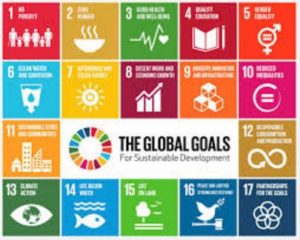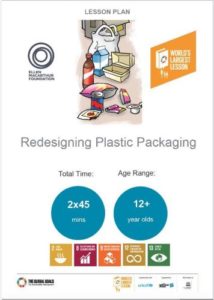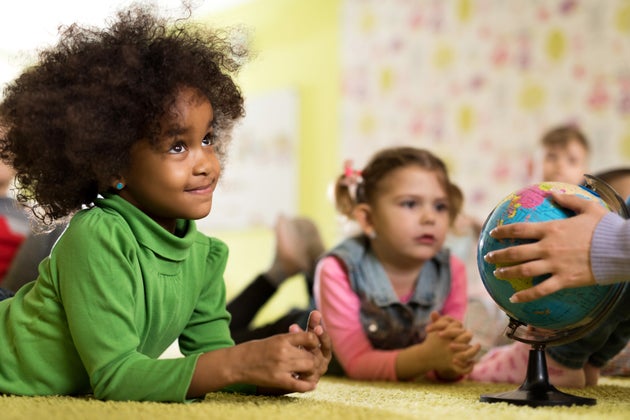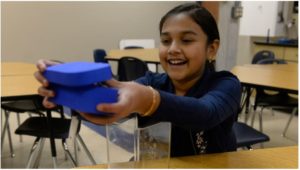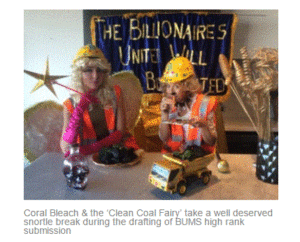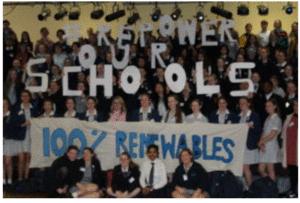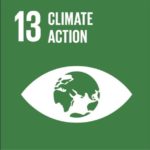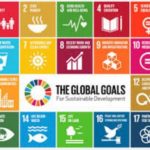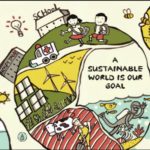Last month, Gitanjali earned the top prize at the Discovery Education 3M Young Scientist Challenge. She invented a portable device that can test for lead in water, which she presented to a panel of scientists and school administrators from around the country.
Project Sparked By Water Crisis In Michigan
The city of Flint, Michigan, has been facing a water emergency because there was too much lead in its water. This story inspired her work.
Kathleen Shafer is a researcher in plastics technologies at 3M, a company that makes thousands of different products, from post-it notes and scotch tape to medical devices and software. Shafer was paired with Gitanjali over the summer as a mentor. She says that Gitanjali has a “passion for making a difference through her innovation.”
Inspired To Solve “Real-World Problems”
For Gitanjali, coming up with an innovative solution is the reason science is her favorite subject. “Science allows me to look at approaches to solve the real-world problems out there,” she says.
Gitanjali focused on water testing as she learned more about the situation in Flint, Michigan. She heard about how limited the options were for people to determine if their water was contaminated.
“I hadn’t thought about creating a device until I saw my parents try to test for lead in our water,” Gitanjali says. “I realized it wasn’t a very reliable process, since they were using test strips.” Some strips labeled their water as safe and others showed that lead was present. The more accurate option was both expensive and time-consuming. It involved collecting samples and sending them to be looked at by professionals.
“I wanted to do something to change this not only for my parents, but for the residents of Flint and places like Flint around the world,” says Gitanjali.
Brainstorming The Best Solution To Problem
She started with brainstorming. She quickly realized that her initial idea – coming up with a way to remove lead from water, possibly by finding a bacterium that could remove it – wasn’t very practical and might introduce other hazardous chemicals into water.
She stumbled onto the idea of carbon nanotube sensors – chemical sensors at the atomic scale – after reading about them on a Massachusetts Institute of Technology (MIT) website. She discovered an article about how useful the sensors are for detecting hazardous gases. When an atom loses or gains an electron, it becomes an ion. This means it has a positive or negative electric charge. These ions are put into the tiny nanotubes with certain gases in them. The ions and the gases then interact, combining together to form compounds, which can be tested.
A Work In Progress For Girl
The article got Gitanjali thinking. Why couldn’t she use the same idea to test for lead in water? She started researching carbon nanotubes as well as the properties of lead and what sort of chemical would react with it. She also considered options to receive and transmit the data before settling on an Arduino processor, a programmable computer chip.
Gitanjali then moved from brainstorming to experimentation. She decided on lead acetate as the most common compound of lead found in water and chloride as the ion she would introduce to react with the lead acetate. Also, she chose to work with “buckypaper,” a thin sheet made from carbon nanotubes that she could fold and cut. Gitanjali then started making the first model for her project.
Device Named After A Greek Goddess
The result: Tethys, named for the Greek goddess of fresh water. It’s a small blue housing that Gitanjali built using her school’s 3-D printer. It has computer chips and a battery inside, a disposable cartridge that can be dipped in water, and a Bluetooth device that transmits the data to a phone. A free app, which Gitanjali designed with support from her computer science teacher, gives instant results.
The process wasn’t always easy, though, and that’s what Gitanjali says she emphasizes most to other children who might want to invent or innovate. Failure is part of the process. “Failure is just another step to success,”she says.
A Few Roadblocks Along The Way
In the course of developing Tethys, Gitanjali hit numerous roadblocks. But Shafer, her 3M mentor, helped with developing the device and cutting her presentation down to five minutes, which Gitanjali says was a challenge.
Shafer notes that she’s a big fan of competitions like this one, because they make connections between children and working scientists. It allows students to envision what a career could look like and see that scientists aren’t one-dimensional.
11-Year-Old Also Awarded $25,000 cheque
Gitanjali is quick to credit not only her teachers with helping her, but also her parents, who she says have constantly supported and encouraged her “crazy ideas.”
Along with the honor of winning the competition, which is open to fifth- to eighth-graders, Gitanjali received a check for $25,000, which she plans to use to further develop her device and get production started (her goal is for it to be commercially available within a year). She also wants to donate to the Children’s Kindness Network and save for college.
She already has big plans for the future, studying diseases and genetics at the Massachusetts Institute of Technology in Cambridge.
For now, she’s already thought of the next challenge she wants to try to solve: the growing problem of adolescent depression. And she has a working concept for what she wants to create. She calls it a “happiness detector.”


